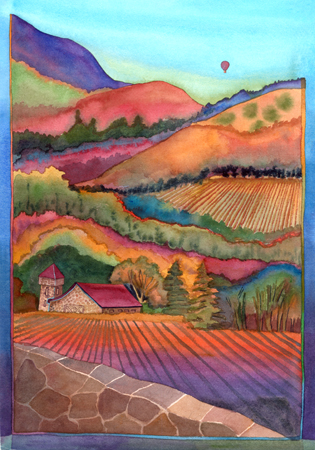While the majority of grapes that are cultivated for the production of white wine are classified as ‘white grapes’, in reality these grapes contain varying levels of color on the skins. Therefore, most ‘white grapes’ in fact show colors of green, yellow, straw and in the case of Pinot Gris (Grigio) greyish-pink. The distinguishing factor in separating white wines from red or rose wine production is the absence of grape skin contact during the fermentation process.
After the white wine grapes have been harvested, they are most often removed from the stems, crushed, and pressed. This process separates the clear juice from the stems and skins while ensuring that minimal color and other compounds have been extracted prior to fermentation. In some cases, a winemaker may choose to allow some juice to skin contact, or press the whole clusters of grapes without employing the processes of crushing or de-stemming.
Not all grapes used for white wine production lack color or pigmentation in the skins. In fact, two of the most recognizable grape varieties in the market today produce white wines from grapes with light red or fully red skin color on the ripe grapes. Pinot Noir, a red grape, which produces some of the finest wines in Burgundy, California and Oregon, is of tremendous importance in the wines of Champagne in which it is most often encountered in Blanc de Noirs Champagne. The term Blanc de Noirs or white wine that is produced from black (red) grapes is most often produced from Pinot Noir and the lesser-known Pinot Meunier grapes, both of which are dark skinned grape varieties. Pinot Gris (Grigio) is another dark skinned grape variety that is used to produce the well-known still white wines from Alsace and Italy.
Once the grapes for white wine have been pressed, a period of time passes in which the juice is allowed to settle. During this phase, any solids that were in the juice after pressing will gradually settle at the bottom of the tank. The resulting juice on the top of these solids is therefore clear and will be transferred to another tank or vessel for fermentation. This process, in which the clear juice is removed from the solids in the bottom of tank is known as racking and will be preformed a number of times over the course of fermentation and aging. With the clear juice now free of the majority of solid matter, the process of fermentation will occur. Through the introduction of native or cultured yeasts, the sugars in the white juice will become the intake necessary for the yeasts strains to become active. During this activity, the process of fermentation will convert the sugars into Carbon Dioxide, heat and alcohol. Typically the process of fermentation for white wine is done over a longer period of time than what is necessary for red wine fermentation. The longer duration of time is due to the need to keep the fermenting juice at a cool temperature in order to keep the juice from spoiling. White juice lacks the natural preservatives found in the skins of the grape and therefore the juice is more prone to oxidation and browning. Keeping the juice at a cool temperature helps protect against spoilage, but keeps the vigor of the yeasts low and therefore the fermentation process takes a longer period of time.
Once fermentation is complete, the juice contains alcohol and therefore is considered to be wine. Additional aging is at the discretion of the winemaker and most wines produced will undergo additional tank and/or barrel aging prior to bottling. During the aging process, the winemaker may choose to employ a number of techniques that will add complexity to the finished wine. One of the more common aging practices for white wines is the process of Battonage. This is the stirring of the broken down yeast cells known as lees, into the wine. This is done periodically over the course of aging and often results in creamy, nutty characteristics in the wine that can be described as flavors similar to blanched almonds and bread dough. Some white wines, more often Chardonnay than other white varieties, will undergo barrel aging in small barriques. Barriques are typically 225 liters in size and impart a range of flavors in the wine. Producers can choose to use these oak barrels to impart additional flavors reminiscent of buttered toast, vanilla and honey.
After the aging process is complete, white wines often go through the process of cold stabilization, in which tartaric acid is removed from the wine by keeping the temperature consistently low for a number of days. The winemaker may also choose to fine or filter the wine before bottling, as well as add additional sulfur to the wine in order to guarantee a sound product once the wine has been bottled. These decisions are often solely the discretion of the winemaker and a growing number of white wine producers rarely fine, filter, cold stabilize and use additional sulfur, although the overall percentage of winemakers doing this is relatively low. A growing trend is to seal white wines meant for youthful consumption using Stelvin or Screw Cap enclosures. These types of enclosures guarantee against cork taint or TCA, a bacteria that is transmitted from cork bark used to seal wines into the wine itself. In addition to securing the wine from cork taint, screw cap enclosures allow for easy opening before consumption, although the perception of a lack of quality in the wines sealed this way still exists with a number of consumers today.

© 2013 Wines.com. All rights reserved. Theme © by elemis.